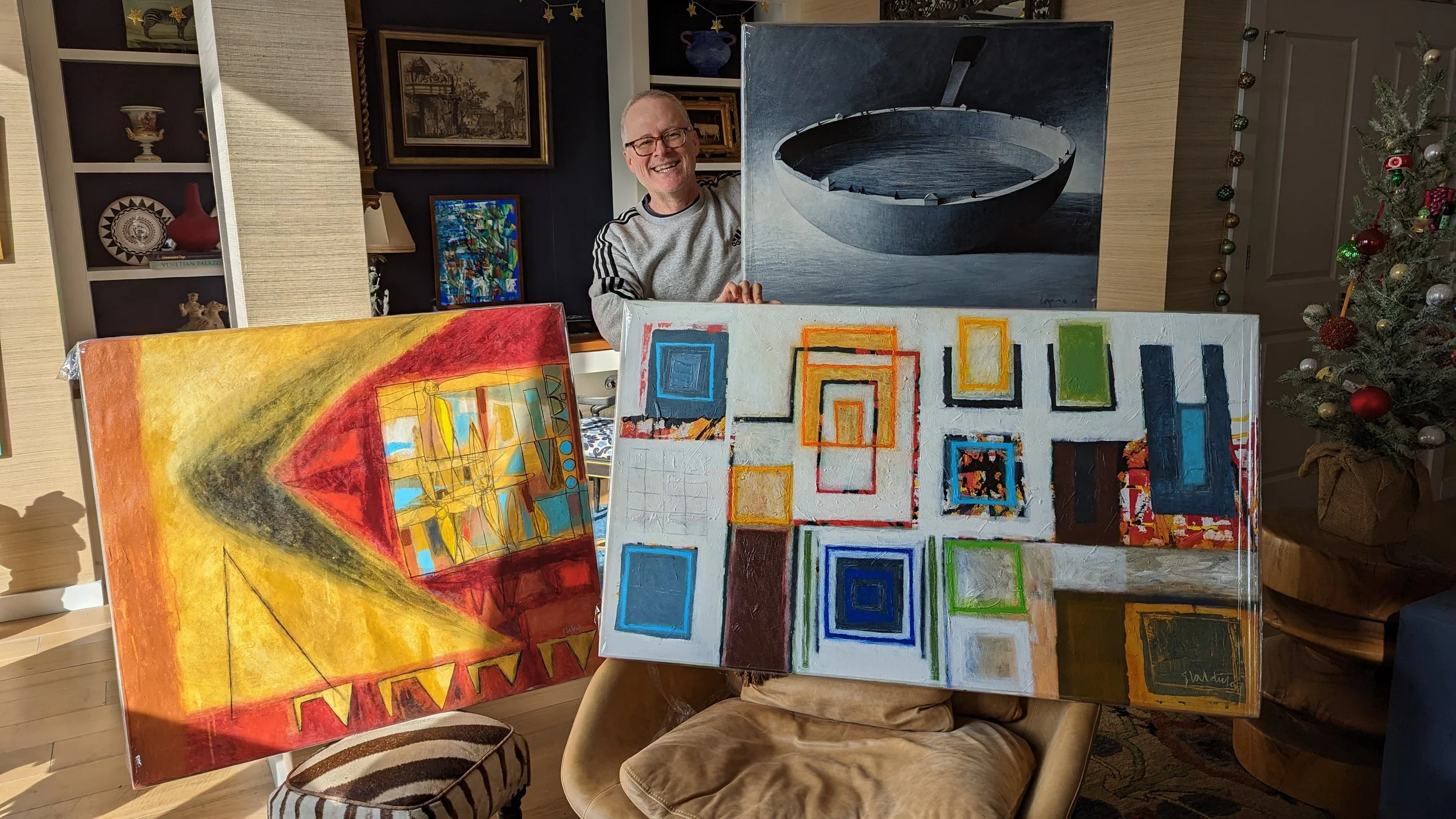


Immersed in the overwhelming feelings he senses from the natural geometry of his Cuban landscape and the vibrations of the cosmic world, Eliseo Valdés distills the vast inspiration that fills him like an overflowing cup into powerful works.
“I’m captivated by the effect size has on perception. The emotions that can only be felt when standing next to a monument; the sense of security or even fear, or freedom that another provides, is all in relation to the scale of the human body and that of the sculpture.”
Drawing upon memories of month-long family trips to the Cuban mountains, Isolina Limonta channels her adventures through the woods and across the hills, creating a world in communion with her spirituality.
My work reflects upon my religious life and the energy and balance that exists within me. All of which are responses to external events and thoughts that arise in my mind... often memories of my family.”
With a stroke of paint mixed with petroleum and gasoline, Hidalgo delves into the most primitive depths of the Yoruba religion. His work draws upon African magical-religious systems, incorporating its evocative mystical symbols and signs.
“I’m from the mountains and the swamps, and my work is experienced as a violation of social norms when it trespasses into the urban atmosphere of the cities. I’m not here to please, but speak what has possessed me.”
For Lozano, the limit of what is known represents the frontier of discovery. Havana-born Lozano illustrates the commonplace aspects of his culture and uses it as an anchor, grounding himself in the known, while journeying into the unknown, on the other side of the horizon line.
“The Malecon is the commonplace of many Cubans, it’s our overlook for viewing the outside world and the horizon: a place of hope, joy and sorrow. It's the limit and the frontier into a new and wonderful world."
In his earthly horizons and those of parallel universes, Barea expresses the insistent human desire to seek. Traveling on otherworldly vessels sewn directly into painted canvas, his protagonists navigate the search of what it means to be oneself.
“I reflect on all the things that make us who we are; the problems we encounter, particularly those that originate from our own actions. Through my work I give design to these problems. I want to find what I have yet to discover.”
Wearing a crown made of toilet paper roll hair curlers, bedazzled with glitter, and adorned in the cheapest plastic flowers from the corner store, Nadia Porras assumes the persona of Maraya Shells. Inspired by Cuban kitsch, Nadia/Maraya transforms the crumbling sidewalks of Havana into high-fashion runways.
“Maraya Shells is as Cuban as it gets, and her fashion says it all. It doesn’t matter whether she’s in an alley, the street, the store, or a neighbor’s home, she’s always ready to work, and you’d better believe she’ll look good while doing it.”
Reality is the subject of the works by Evelio Toledo, and over time his works become historical engravings of lifestyles that are now long gone. Just as in his days working as a journalist, he captures what is and what will someday become what was.
“In some function or another, I’ve always been linked to story telling. Either as a journalist or illustrator, it was my job to capture, as honestly as possible, what was in front of me. My art is meant to preserve what one day may become forgotten.”
Considering himself an international citizen, and with a dream to travel the Americas in a van, Daniel Ortega left Cuba to begin a new life for himself in Buenos Aires, Argentina, where he paints murals by day and prolifically produces his personal works at home with his daughter on his lap and his wife beside him.
“My artworks tend to be loaded with heavy topics and crazy imagery, so I’ve learned that having my family involved in my process keeps my daughter happy and provides me with unique inspiration; particularly when she tosses paint on my canvas.”